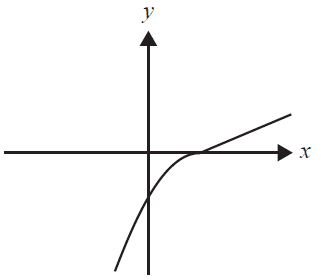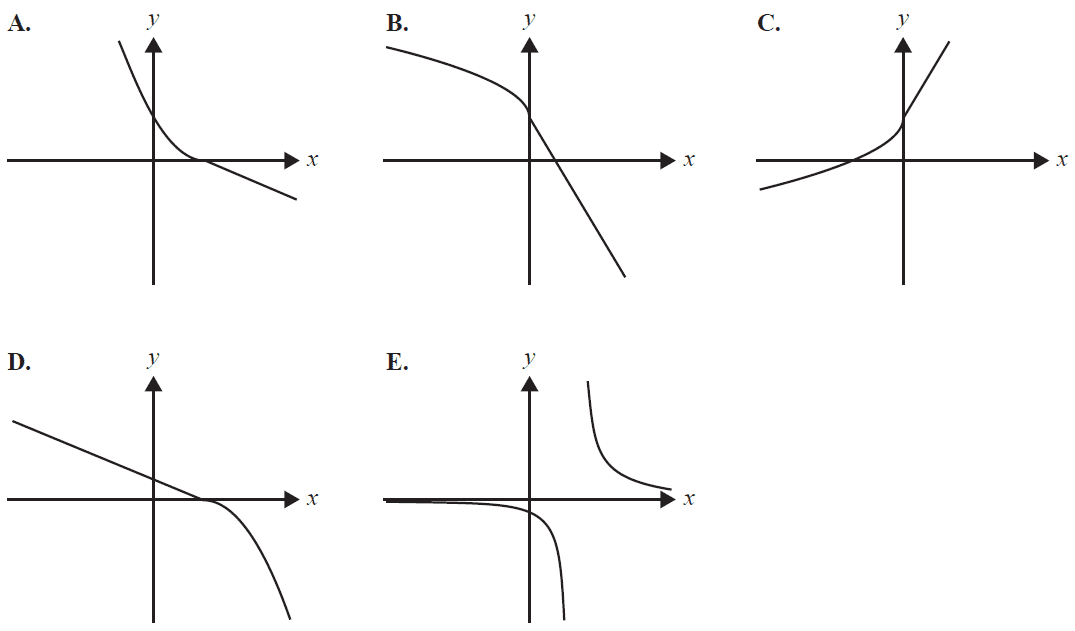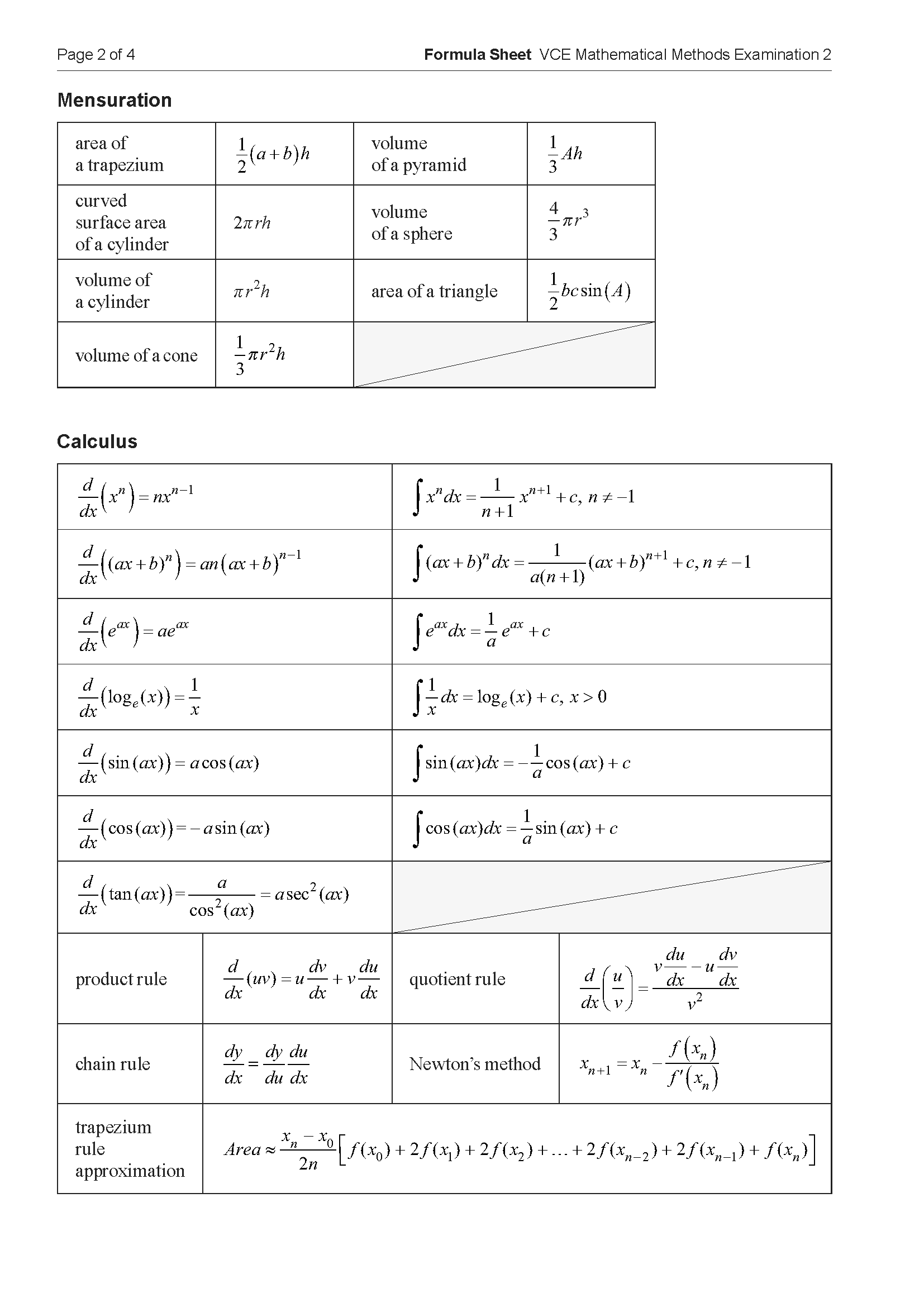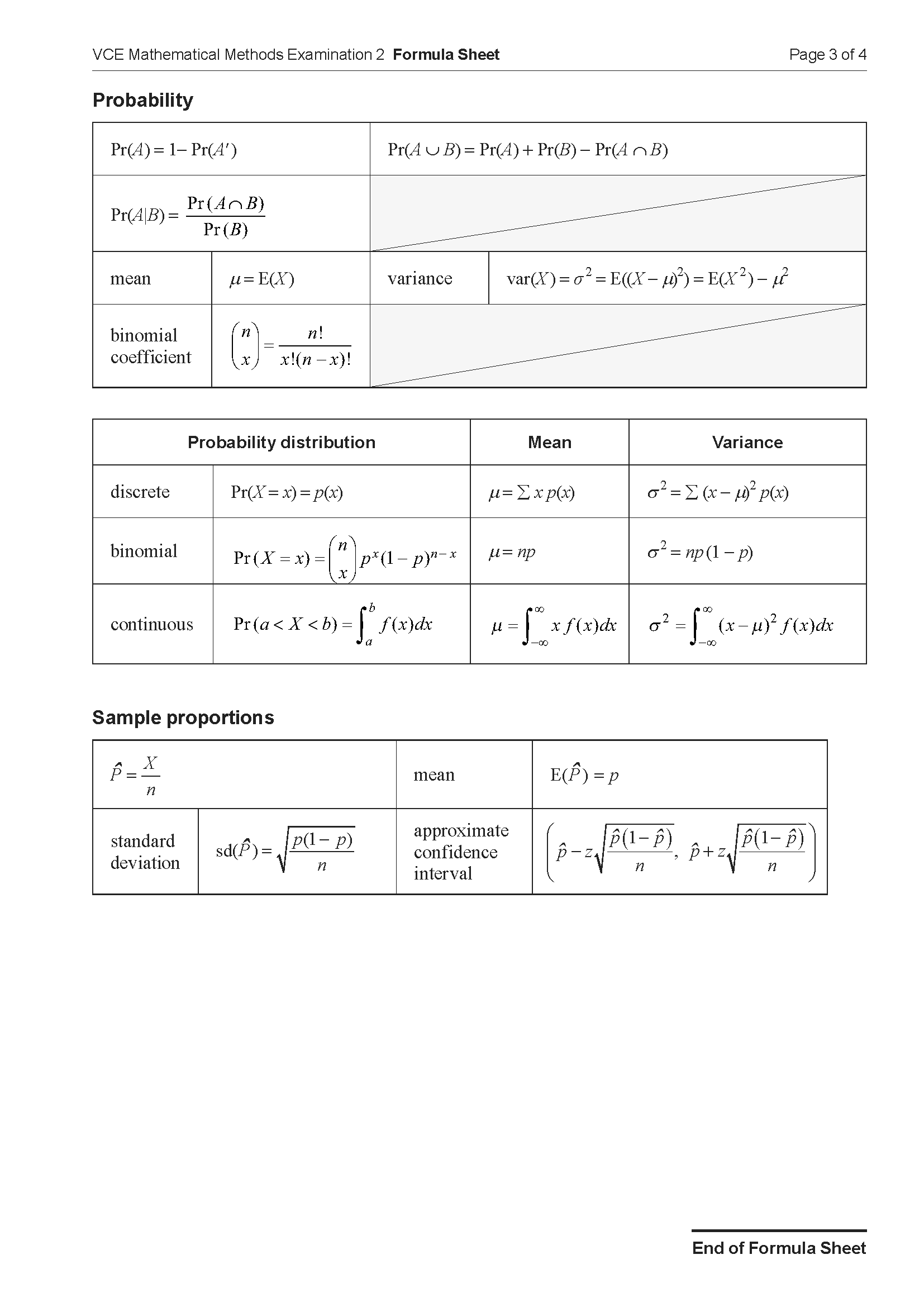VCE Maths Methods Functions Mini Test 7
Number of marks: 10
Reading time: 2 minutes
Writing time: 15 minutes
Section A – Calculator Allowed
Instructions
• Answer all questions in pencil on your Multiple-Choice Answer Sheet.
• Choose the response that is correct for the question.
• A correct answer scores 1; an incorrect answer scores 0.
• Marks will not be deducted for incorrect answers.
• No marks will be given if more than one answer is completed for any question.
• Unless otherwise indicated, the diagrams in this book are not drawn to scale.
The graph of the function \(f\) passes through the point \((-2, 7)\).
If \(h(x) = f\left(\frac{x}{2}\right) + 5\), then the graph of the function \(h\) must pass through the point
- A. \((-1, -12)\)
- B. \((-1, 19)\)
- C. \((-4, 12)\)
- D. \((-4, -14)\)
- E. \((3, 3.5)\)
Let \(f: [2, \infty) \to R, f(x) = x^2 - 4x + 2\) and \(f(5) = 7\). The function \(g\) is the inverse function of \(f\).
\(g'(7)\) is equal to
- A. \(\frac{1}{6}\)
- B. 5
- C. \(\frac{\sqrt{7}}{14}\)
- D. 6
- E. \(\frac{1}{7}\)
Let \(f\) and \(g\) be functions such that \(f(2) = 5\), \(f(3) = 4\), \(g(2) = 5\), \(g(3) = 2\) and \(g(4) = 1\).
The value of \(f(g(3))\) is
- A. 1
- B. 2
- C. 3
- D. 4
- E. 5
Part of the graph of the function \(f\) is shown below. The same scale has been used on both axes.

The corresponding part of the graph of the inverse function \(f^{-1}\) is best represented by

The graph of the function \(f: D \to R, f(x) = \frac{3x+2}{5-x}\), where \(D\) is the maximal domain, has asymptotes
- A. \(x = -5, y = -\frac{3}{2}\)
- B. \(x = -3, y = 5\)
- C. \(x = \frac{2}{3}, y = -3\)
- D. \(x = 5, y = 3\)
- E. \(x = 5, y = -3\)
Let \( f: R \to R, f(x) = (2x-1)(2x+1)(3x-1) \) and \( g: (-\infty, 0) \to R, g(x) = x \log_e(-x) \).
The maximum number of solutions for the equation \( f(x-k) = g(x) \), where \( k \in R \), is
- A. 0
- B. 1
- C. 2
- D. 3
- E. 4
The maximal domain of the function \(f\) is \(R\setminus\{1\}\).
A possible rule for \(f\) is
- A. \(f(x) = \frac{x^2 - 5}{x-1}\)
- B. \(f(x) = \frac{x+4}{x-5}\)
- C. \(f(x) = \frac{x^2+x+4}{x^2+1}\)
- D. \(f(x) = \frac{5-x^2}{1+x}\)
- E. \(f(x) = \sqrt{x-1}\)
End of Section A
Section B – No Calculator
Instructions
• Answer all questions in the spaces provided.
• Write your responses in English.
• In questions where a numerical answer is required, an exact value must be given unless otherwise specified.
• In questions where more than one mark is available, appropriate working must be shown.
• Unless otherwise indicated, the diagrams in this book are not drawn to scale.
Let \( f: (2, \infty) \rightarrow \mathbb{R} \), where \( f(x) = \frac{1}{(x-2)^2} \).
State the rule and domain of \( f^{-1} \). 3 marks
End of examination questions
VCE is a registered trademark of the VCAA. The VCAA does not endorse or make any warranties regarding this study resource. Past VCE exams and related content can be accessed directly at www.vcaa.vic.edu.au

